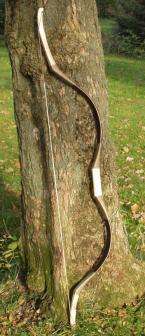Tilhar
Tilhar is a city, tehsil, and municipal board of the Shahjahanpur district in the Indian state of Uttar Pradesh. It is the oldest city in Shahjahanpur, and currently has a population of 57,043[2].
Tilhar | |
|---|---|
City | |
| Nickname(s): Tilakpur | |
 Tilhar Location in Uttar Pradesh, India | |
| Coordinates: 27.98°N 79.73°E | |
| Country | India |
| State | Uttar Pradesh |
| District | Shahjahanpur |
| Founded by | Tilakraj |
| Area | |
| • Total | 12.89 km2 (4.98 sq mi) |
| Area rank | 1 |
| Elevation | 152 m (499 ft) |
| Population (2014)[1] | |
| • Total | 90,000 |
| • Density | 7,000/km2 (18,000/sq mi) |
| Languages | |
| • Official | Hindi |
| Time zone | UTC+5:30 (IST) |
Tilhar is also a constituency of Uttar Pradesh Vidhan Sabha. Because the town was known to supply bows to Moghul armies, Tilhar was also called "Kamaan Nagar" in ancient India.[3]
History
Tilhar was named after Trilok Chandra, either just before or during the reign of Moghul Emperor Akbar. Trilok Chandra was a Kayastha who came from Pakhna Vihar, situated near Farrukhabad. The present-day city Shahjahanpur was established by Diler Khan and Bahadur Khan, the sons of Shri Dariya Khan, who were commanders in the army of Mugal Emperor Jahangeer. Both of them were dignitaries in the regime of Shahjahan. Satisfied with the services of Diler Khan, Emperor Shahjahan gave him 14 villages and the permission to build a fort. Diler Khan developed a fort in Naina Khera, a village situated between the Garra and Khannaut rivers.
Earlier, Trilok Chandra had also built a fort in Tilhar. The ruins of this fort can be seen in Dataganj Mohalla. There were three large gates in the fort, two of which still exist. The village of Tilokpur was also named after Trilok Chandra and is located 7 kilometres south of Tilhar. Another fort by the name of Dodrajpur was built by Raja Dodhraj. There is now a village at the location and only a few walls and corner battlements are still there. The descendants of Trilok Chand and Raja Dodhraj were some of the biggest zamindars in the region and continue to be the most prominent family of Tilhar and its surrounding area.
Kamaan Nagar

Tilhar is the oldest town in the present district of Shahjahanpur. Due to the supply of bows to the armies of the Moghuls, this town was called "Kamaan Nagar".[4] People who used to live in Tilhar or have been living in Tilhar from ancient times (since 1600) are called 'Kamangar'. Mohammad Umar Khan was a Nazim of Hafiz Rehmat Ali Khan. His son Mangal Kha, established a fort in the village Mansurpur, near Tilhar. He and his family members owned it until the first Indian Rebellion of 1857. Later, the British Government occupied it and transformed it into a tehsil. A police station was set up to control the revolt.
Now, traditional bamboo cane makers in Tilhar use the technique of straightening bent bamboo by simultaneously dipping it into thick molasses and heating it with a fire. It is believed that their ancestors might have used the same traditional technique in bending bamboo sticks and giving them the shape of bow weapons.
Demographics
In the 2011 Indian census,[5] Tilhar had a population of 61,444 out of which 31,908 are males and 29,536 are females. Tilhar has an average literacy rate of 50.77%, below the state average of 67.68%; male literacy is 55.53%, and female literacy is 45.63%. In Tilhar, 14% of the population is under 6 years of age.
Educational institutions
The following institutions[6] are located in Tilhar:
- Deendayal Upadhyaya Government Degree College, Tilhar
- Government Girls Inter College, Tilhar
- L.B.D.Girls Inter College, Tilhar
- L.B.J.P. Inter College, Tilhar
- R.V.M. Inter College, Tilhar
- Rani Awanti Bai Uchchtar Madhyamik Vidyalay, Tilhar
- Saraswati Vidya Mandir Inter College
- Sarla Devi Kanya Uchchtar Madhyamik Vidyalay, Tilhar
- Shaheed Brahmdatt Uchchtar Madhyamik Vidyalay, Tilhar
- Kisan Inter College, Near Sai mandir, Tilhar
- J.D. Singh Inter College, Tilhar
- The Renaissance Academy, Tilhar
- Maharishi Dayanand Shiksha Sadan, Tilhar
- Cambridge Public School
- Vidhya Education Center, Dabhaura Nigohi road, Tilhar
References
- http://www.censusindia.gov.in/pca/SearchDetails.aspx?Id=142517
- "Tilhar in India: general information, weather, map, photo and video". AllTheCities. Retrieved 2 June 2020.
- Ltd, rome2rio Pty. "Discover how to get to Tilhar from anywhere". Rome2rio. Retrieved 2 June 2020.
- Dr. Mehrotra N.C. page 114
- "Census of India 2001: Data from the 2001 Census, including cities, villages and towns (Provisional)". Census Commission of India. Archived from the original on 16 June 2004. Retrieved 1 November 2008.
- "Archived copy". Archived from the original on 16 February 2012. Retrieved 27 February 2015.CS1 maint: archived copy as title (link)
- Dr. Mehrotra N.C. Shahjahanpur Etihasik Evam Sanskritik Dharohar 1999 Pratiman Prakashan 30 Kucha Ray Ganga Prasad Allahabad 211003 India.
| Wikimedia Commons has media related to Bows. |
